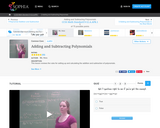
This lesson reviews the rules for setting up and calculating the addition and subtraction of polynomials.
- Subject:
- Mathematics
- Material Type:
- Demonstration
- Provider:
- Sophia
- Date Added:
- 04/17/2018

This lesson reviews the rules for setting up and calculating the addition and subtraction of polynomials.
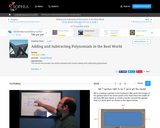
This lesson will provide real world examples that involve adding and subtracting polynomials.

Students will learn how to combine like terms from two functions or take the difference of two functions.

This lesson covers the concept that when given two equations in the same format, those equations can be added or subtracted.
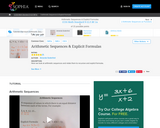
In this video, students look at arithmetic sequences and relate them to recursive and explicit formulas.

This lesson demonstrates how to write an arithmetic sequence as a function.

Students will be shown step by step how to set up a quadratic equation in order to factor it.

This tutorial by Bill Nye explains how to make a simple barometer using a jar and a balloon. The barometer is an old and accurate first look at predicting the weather by examining the pressure of the atmosphere. Students will discover how atmospheric pressure and surface gravity help meteorologists forecast the weather.

In this tutorial students will learn about static electricity. Students will also be able to explain what happens when neutral, positively charged, and/or negatively charged objects come into contact with one another.

This experiment from Bill Nye explains how to make a tornado in a bottle. Students will learn how gravity and air mass work together when creating a tornado contained within 2 bottles. Students will also discover how wind speed increases when colliding with warm air to create real world disasters that are known to be much more intense than hurricanes.

In this tutorial students will learn the importance of biological classification and how the process of biological classification changes over time. Students will also learn about current methods scientists use for classifying organisms and how to use a dichotomous key.

In this tutorial students will learn how Earth moves through space, how seasons are caused by tilt of Earth’s axis, and why different latitude zones have different average temperatures.

In this tutorial students will learn about water in the atmosphere. Students will learn about cloud types, cloud formation, humidity and dewpoint, and much more.

In this tutorial students will learn to distinguish between weather and climate. Students will also describe the main factors affecting regional climate and compare climate variations due to natural and human causes.

In this tutorial students will learn about the various biomes. This tutorial describes representative climate features of terrestrial and aquatic biomes as well as representative organisms of terrestrial and aquatic biomes.

In this tutorial students will learn how to identify the components of a chemical equation and how to balance chemical equations.
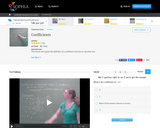
This lesson will explain the definition of a coefficient and how to calculate one.
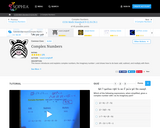
This lesson introduces and explains complex numbers, the imaginary number i, and shows how to do basic add, subtract, and multiply with them.
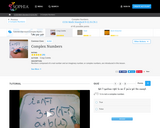
Numbers composed of a real number and an imaginary number, or complex numbers, are introduced in this lesson.

In this tutorial students will learn about the four major types of air masses and how they create fronts that affect weather patterns.